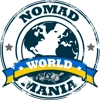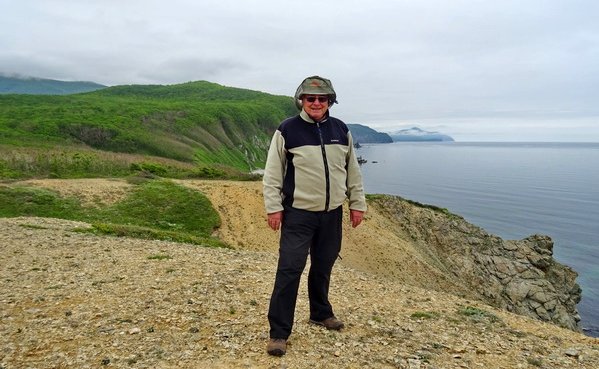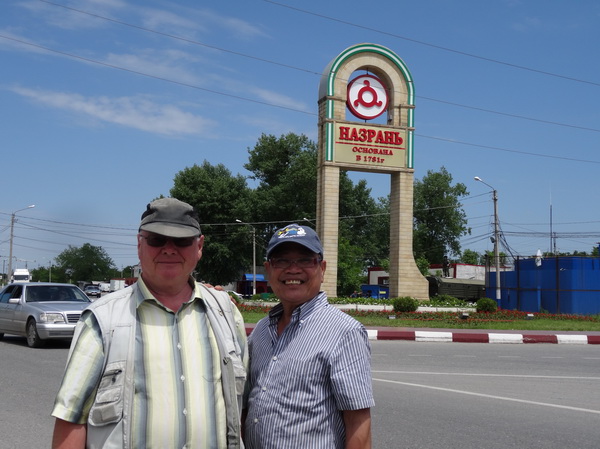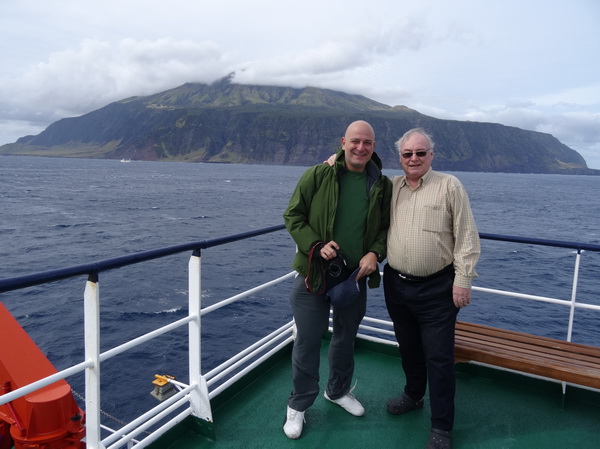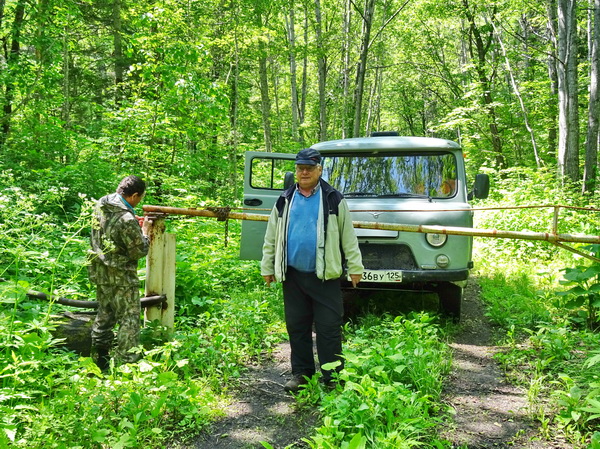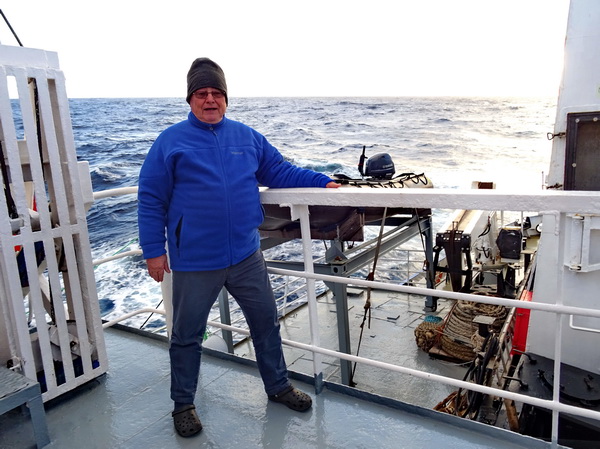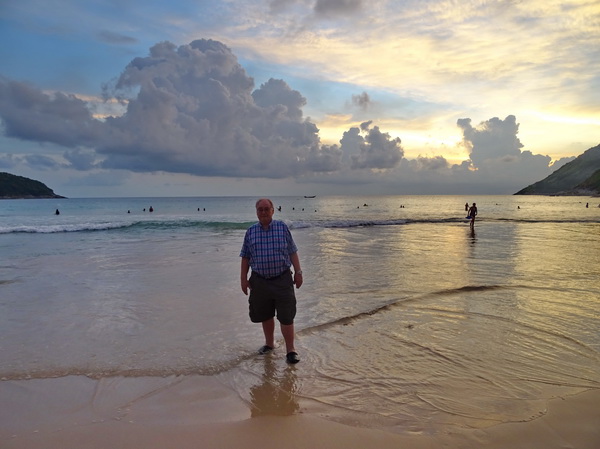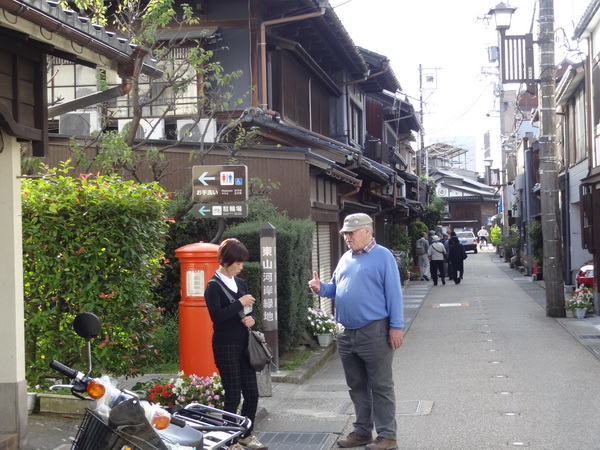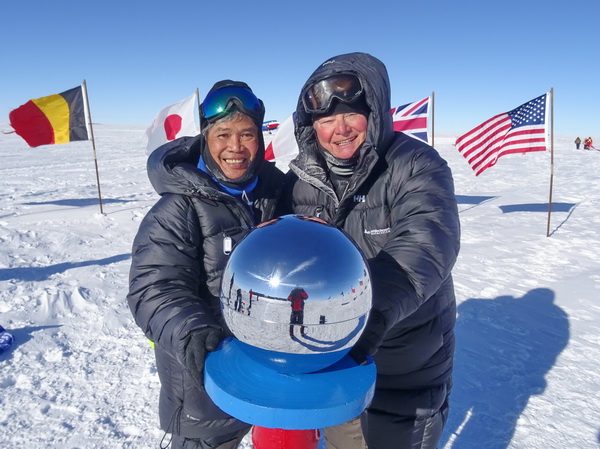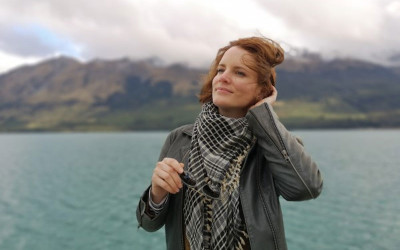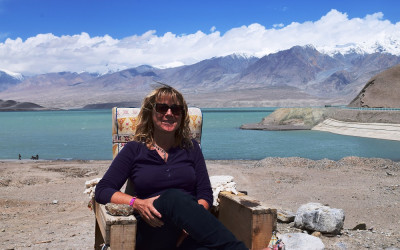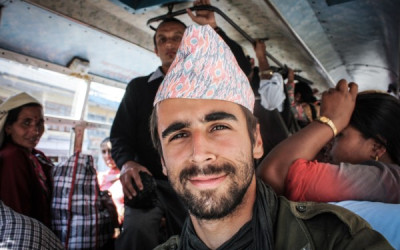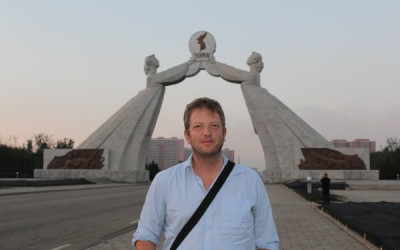Today we talk with Frank W. Grosse-Oetringhaus, “The Best Travelled Man on Earth”.
Frank, could you tell us something about yourself?
I am 73 and I started travelling when I was 15. I was brought up in Hamburg, and my father handed me a train ticket to England so that I could go and improve my English. It was 1957 and at the time travelling was not something common. So my trip to England, via Ostend, was the beginning for me. I then studied industrial engineering and got a PhD in economics, becoming an associate professor. I had always wanted to travel though, and I joined Siemens, a global company, which gave me many assignments around the world as a consultant.
But you are now retired. So how do you travel nowadays?
I have a registered partnership – since 2006 – with Teodoro Murallon who is originally from the Philippines but then immigrated to Germany. We have known each other for 32 years and we have travelled together ever since. He is the best travel company I can think of because of his adaptability, it’s in his genes. The Filipinos are the most adaptable people in the world and this is what you have to be as a traveller, to adapt to all situations.
For the last 10 years we have been ‘homeless’. We had sold our house in Munich 10 years ago, still have a house in Thailand, but we rented that out. But in about a year we will change our nomadic life style, our non-stop travelling will come to an end, we have achieved our goals, therefore I have bought an apartment in Berlin which we will use in the near future. For the last 10 years we have travelled every day, in the future only about 4 months, but there will be a transition period.
You are currently the 3rd ranked traveller in thebesttravelled.com, which makes you a true travel ‘guru’. Do you have a favourite place?
I would restate your question with ‘where have you been moved to tears’? That happened several times. Let me give you two examples.
The Dry Valleys of Antarctica. It’s very difficult to go there. The M/V Ortelius is the only ship to go there and then you need helicopters. When you fly in these huge valleys and you imagine that for 3 million years there was no precipitation, and you step out and almost nobody has been there, and you see the Ross Sea, you see the glaciers and all the dryness, and the mummies of the seals, some 2000 years old, perfectly maintained – you believe you are not in this world anymore. We made 3 attempts to go there. After this tension, the emotions are very strong.
Also, I would single out Lake Uyuni in Bolivia at 3660 meters height. The night before you have slept in a salt hotel, the only one of its kind and you don’t sleep well, now you drive on the largest salt flat of the world. Pure white, you need special sunglasses and you drive to the middle of the flat, 40 km times 70 km and in the middle you step on an island above the white and you see the oldest and highest cacti in the world, 900 cm high, so 900 years old. You go up and look down to the island and you are in an island surrounded by whiteness. And in the distance you only see glaciers and volcanos all around when you turn your head 360 degrees. You are overwhelmed by this beauty. This is the epitome of surrealism. This is unique. Even the Incas used it as an altar. There is no question this is a Mega Highlight!
A mega highlight? What is this to you?
In short: A highlight with two or more outstanding worldwide superlatives. A unique place, worldwide one of a kind. Allow me to give you some background information about how the highlight concept had developed.
After my professional career, in 2002 I started a new phase in my life and this phase was dedicated to travelling and as an aside, involvement with UNESCO (the World Heritage Association, as an organisation). We founded our own organisation, the “World Heritage Development Project”, helping small countries getting on the “Tentative List”. We started with the WH list but that turned out to be complicated, you have to follow 160 guidelines… Germany wrote 5000 pages to get Regensburg on the List! So now we work almost only for the Tentative List because that is simple: 5 chapters, a couple of pages. Our special competence stems from my professional background as a strategist, about how to give a place a competitive advantage… about 200 candidates want to go to the list every year but only about 20 make it. So you are in a competitive position. If you want to get on the List you have to outperform a competitor. Usually the applications are written by specialists, they see the details, but often they don’t see the competitive position so clearly. And this is where we come in – our methodology is to find out the competitor! We have visited more WHS than anybody else in the world. We have seen more highlights so we have outstanding knowledge. We can compare these sites with others…
The second thing I need to mention. It started in the early 80s when I had a motorcycle accident (I used to be a cyclist) in Limerick, I had to fly to Germany and had some time to think – as hobby I started making lists – important volcanos, beaches, mountains, restaurants, cities, cities to live in, cities to view etc. So I started thinking of travelling in a more systematic way – here I can’t deny my German genes, in the need to be systematic. So I started to systematise the whole world.
In mid 70s, the WHS list appeared and I ask my secretary to find it – it wasn’t easy to get. I saw that nature and culture form the axes of that. Then I asked a travel agent… what are the tourists interested in? He answered with the 3 s: sun, sand, sex. Then I went to another agent who added another S: Shopping. Another added a5th s: sightseeing. The WHS is only about nature and culture. Not about beaches, sun, sex… Since we take the tourist’s perspective, we have to look for a broader spectrum.
So, what we have done, and this is where the term ‘highlight’ comes in, is that we started creating the list based on what tourists are interested in. We developed a systematic concept of highlights. Relevant things to see, relevant in an objective way. The trouble is that most people who make lists have only lists of countries and regions, subdivisions in whatever form – that’s easy because that is available… but by no means of subdivision you will reach the real stuff, the highlights, you keep on crossing borders. For me you do not go to Germany, but to Brandenburg Gate. You go to contents. Traveling is not about crossing borders, on the contrary, that is only a nuisance. If you want to see the relevant things of the whole world, you have to be selective, you want to go for the best and – voilá – we are into highlights.
Can you explain then what exactly is a highlight?
Firstly, it is a geographically identifiable spot – not like WHS where for example the whole Western Rocky Mountains are included. Second, it must be legally accessible. Third, it must be tangible (soul is not on my list) and then we have our criteria a. It must be a superlative b. It must be unique and uniqueness, if not obvious, must be considered by well-renowned groups of people, books etc… and c. it must be objective – my personal opinion is of no relevance for the selection – it must fulfil clear criteria which characterizes the highlight.
The criteria must be relevant for the character of the site. An example: a waterfall can be described in height (the supreme is Angel Falls in Venezuela), width (so the supreme is Victoria Falls which is 1.8 kms wide) and volume (where the supreme is the Niagara falls) and the amount of waterfalls on the site (Iguassu has 285, which makes it supreme in this category).
The selection must be systematic, it means we subdivide the world into 1000-2000 categories – waterfalls, rocks, shopping malls etc. – and then we make a ranking within these categories.
Beauty is an important criterion. Beauty is in the eyes of the beholder, the judgement of the individual. We take the judgement not of one individual but of all beholders. The trick is that we substitute beauty by popularity in order to be objective. What is the most beautiful painting? In the eyes of all beholders it is the Mona Lisa. Your individual opinion is irrelevant. This would be subjective. Mona Lisa outperforms all paintings. The number of visitors is objective.
How many highlights are there on your list?
The List has not been completed yet, it will take one more year. We will come up with about 1500 categories and in each one we have about 3 top positions, so that makes 4500.
Our project is now to prove that it is feasible to see 4500 to 5000 highlights in 10 years. It is tough, but it is doable. Teo and I will do it. We are writing a book about the concept and the selection of highlights. It will be published in 2-3 years. Right now it’s a huge database. We write something valuable to tourists – we say you should know what are the most important sites in a region…
We describe every item by its individual uniqueness, so you will always have a rationale why is it on the list. Compare this with Patricia Schultz who wrote the book 1000 places to see before you die. She is not systematic, she does not give you a rationale for her choices. Our list is also very different from WHS who have 10 criteria – all of them general and therefore meaningless.
So you are currently working on your book?
Yes, we are. The title will be ‘The System of World Highlights’ and as a subtitle, the action title, ‘see the whole world in 10 years’. We will describe every highlight be about 5-10 lines, in the short reading time we guarantee that you are convinced about the uniqueness of this place. If you want to see all of them in 10 years you have to visit a bit more than one highlight a day. That is one of our travel goals. I have outlined the basic principles. There are some problems to deal with. But here this would be too technical.
So, is there a best of the best highlight?
Like a nicest point on earth? How can you answer that when you have to compare a city with a beach? A rock with a museum? That is why we started categorisation, to make it transparent.
But I will not evade from your question. But the answer in this case is subjective. For me the best of the best is Angkor Vat. But yes, the subjectivity is provocative. I have evaluated culture higher than nature, a temple complex higher than an opera – all not objectively justifiable. But in the end it is the biggest temple complex on earth. Its beauty is overwhelming. It takes three days to visit the complex.
When you come up with a list of 5000, people might say it’s too much… we give selection of these – 1000 MEGAhighlights, 2000 TOPhighlights, 2000 NORMALhighlights. We admit that this is not fully objective, but we do have criteria, MEGA must be superlative on global scale…with TOP some worldwide, some regional…
We can hardly wait to read the book. Maybe your highlights can form part of one of our next lists! But beyond highlights, here is a chance for you to be subjective… If you could invite four people to an imaginary dinner, who would they be?
I would go for the most famous people on earth – Alexander the Great, Bill Gates, Steve Jobs and Prince Harry. Alexander the Great, Bill Gates and Steve Jobs are among the greatest visionaries of all time. I would like to talk with them about visions. But why Prince Harry?
We have been to the most expensive lodge in Botswana maybe in the world – Abu’s Camp which costs $10.000 for 3 nights, now owned by Paul Allen from Microsoft. In Abu’s camp you get your own elephant… before I was there, Oprah Winfrey was there. She is extremely popular. The manager of the place, a nice girl, told us that Prince Harry had been there and was the finest guy they ever had outperforming Oprah Winfrey by far. He played football with the mahouts, everybody loved him. Therefore I wanted to talk with him about social and emotional intelligence… he would be a good partner in this for Teo, who scores very highly on both.
The photos in this article are from the private collection of Mr. Grosse-Oetringhaus.
